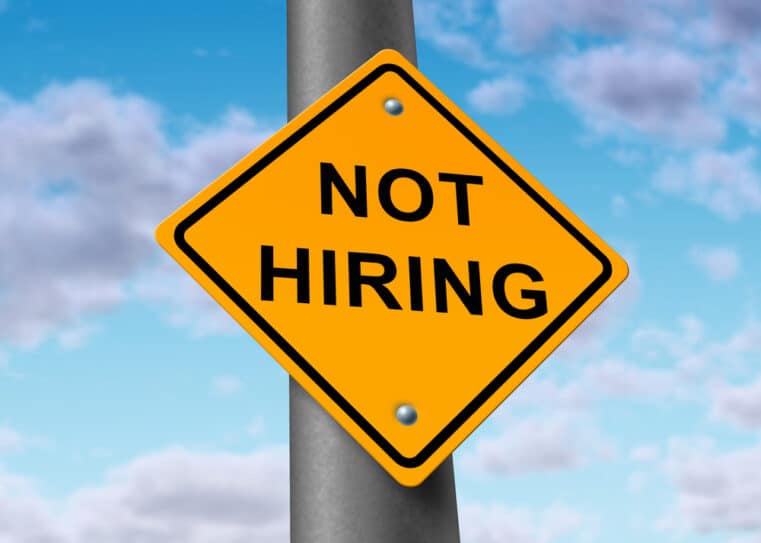
American Workers Are Getting Cheated: Why Your Hard Work Isn’t Paying Off
This we learn from the United States Bureau of Labor Statistics:
American productivity has increased 62% since 1979.
But average real hourly pay (adjusted for inflation, that is) has scarcely increased 17% across the same space.
That is, productivity has run 3.5 laps around wages since 1979.
Thus the average American worker finds himself a hamster upon a wheel… jogging largely in place.
Here our co-founder Bill Bonner reduces to concrete the abstract plight of the American worker:
In 1971, you could buy a new Ford F-150 for $2,500. At $4 an hour, it took 625 hours to buy the truck.
Today’s model costs $30,000, and the average hourly wage is $26. So the wage earner has to work for 1,154 hours to get a standard F-150. Put another way, he has to sell almost twice as much of his time to get a set of wheels.
But it is not only the F-150 owner who has lost the value of his dearest commodity — time:
You can do the same calculation for housing. An average man paid about $24,000 for the average house in 1971. Today, he pays $371,000. Priced in time, the house cost 6,000 hours in 1971 and 14,269 hours today… It takes more than seven years of work for the average guy to buy the average house today – four years more than it took in 1971.
Is it a coincidence that Mr. Bonner selects the year 1971 to draw a contrast?
It is no coincidence whatsoever.
The Fiat Dollar and Globalization
In August 1971, old Nixon slammed shut the gold window… and lowered the shade.
The gold standard was a mere rump in its dying days. It nonetheless kept the balance of trade in a range.
A nation running a persistent trade deficit risked depleting its gold stocks. The unbacked dollar — the ersatz dollar — removed all checks.
America no longer had to produce goods to exchange for other goods… or fear for its gold.
“By the sweat of your brow you will eat,” Genesis instructs us.
Under the new dollar standard, America could eat by the sweat of foreign brows — without perspiring one bead of its own.
Scraps of paper, rolling off an over-labored printing press, were its primary production.
Ream upon ream went abroad in exchange for goods — real goods.
The international division of labor was suddenly opened to the world’s sweating and heaving masses. Many were peasants from the labor-rich fields of China.
They entered the factories in their millions, each toiling for one dollar per day. Perhaps two.
The competition depressed average American wages — wages that have never recovered.
Meantime, the past decade has only deepened existing trends…
The Sparrows Go Hungry
The trickle-down theory of economic progress argues you must first feed the horses in order to feed the sparrows.
It contains much justice — poor men do not open businesses. They do not provide employment. They put no bread in mouths.
But the Federal Reserve’s stable hands have overfed the horses. Since the pandemic started, they have been shoveling in oats at a frantic and delirious rate.
And the sparrows have scratched along on the leavings.
Those earning $1 million or more have captured 63% of all capital gains this past decade. But the Main Street economy has rubbed along at a lilting 2.1% annual pace.
Never has the gap between the stock market and the economy stretched so broadly as today.
Is there a way out of the maze? Yes, argue the technologists…
The Promise of Technology
They insist automation, robotics and artificial intelligence (AI) will soon catapult the economic system into vastly more productive realms.
By 2030 alone, they project (at least before the pandemic) it could yield an additional almost $16 trillion to global GDP.
They further claim 40–50% of human occupations will be subject to automation over the next 15–20 years.
These occupations are not limited to trucking, taxi driving, manufacturing and construction.
To these, we must add white-collared jobs in law, finance, medicine, accounting, etc.
What would become of the attorney at law, we wonder — and the human helmsman of the ambulance he chases?
In truth, we are unconvinced automation will proceed at the rollicking gallop its drummers project.
But suspend all assumption for the moment… and drive on to the inevitable question:
What happens when robots acquire the brains to perform nearly all human labor?
Creative Destruction
Economist Joseph Schumpeter (1883–1950) shoved the term “creative destruction” into general circulation.
For Schumpeter, capitalism was the “perennial gale” of creative destruction. Capitalism blows away the old and inefficient. It hauls in the new and improved.
Because of capitalism’s perennial gale, today’s serf lives more royally than yesteryear’s king.
Explains economist Richard Rahn of the Cato Institute:
The average low-income American, who makes $25,000 per year, lives in a home that has air conditioning, a color TV and a dishwasher, owns an automobile and eats more calories than he should from an immense variety of food.
Louis XIV lived in constant fear of dying from smallpox and many other diseases that are now cured quickly by antibiotics. His palace at Versailles had 700 rooms but no bathrooms (hence he rarely bathed), and no central heating or air conditioning.
Here is progress itself. All because capitalism’s creative gales flattened all before it.
Capitalism’s obvious glories are why most notice the “creative” side of the ledger sheet.
But what about the equally critical “destruction” side?
The Destructive Side of Capitalism
Innovation and technology have always allowed humans to mine fresh sources of productive employment.
The 19th-century farmer became the 20th-century factory worker… became the 21st-century computer programmer.
Now introduce an omnipotent robot…
A robotic brute that can drive home a rivet is one thing by itself. But a genius robot that could do anything a human can do — yet better — is another entirely.
This robot would tower above the human as the human towers above the beasts of the field.
An Aristotle, a da Vinci, an Einstein would be pygmies next to it.
What human ability would lie beyond this unnatural beast? Artistic expression, perhaps?
A 900-IQ robot might run its circles around the human antique, you say. But it could not appreciate beauty — much less express it.
The robot is all brains, that is… but no heart, no soul. The kingdom of the arts belongs to man and man alone.
Well, please introduce yourself to AIVA (Artificial Intelligence Virtual Artist)…
Will the Next Mozart Be a Computer?
AIVA is a computerized composer. Programmers drummed into its ears the music of Bach, Beethoven, Mozart and other colossi of the classical canon.
AIVA teased out their tricks… and taught itself to compose original music based upon them.
Its outpourings are indistinguishable from a carbon-based professional’s. They have been featured in cinematic soundtracks. Advertisements. And computer games.
Will the next Mozart be a computer?
Not even the oldest profession is safe from robotic invasion — but let it pass for now.
What about technology’s impact on the general community?
Winners and Losers
Schumpeter’s creatively destructive gales tear apart the social fabric …
Capitalism puts out its tongue at tradition. It yanks the roots out of communities. It swings the human being around hairpin turns of social and technological change… like a lad on a carnival ride.
Within a generation, the centuries-old farming community has given over to the assembly line and the punch clock.
A generation later, the factory goes dark as creative destruction blows the jobs clear to China… or Vietnam… or wherever labor is cheapest.
Americans must often rip up their families to follow the jobs — thus, they can sink little root in the local topsoil.
Meantime, advancing technology makes today’s job obsolete tomorrow.
Not all the displaced can take up new lines. Many are simply left behind, broken… and can never catch up.
Capitalism, Progress, Must Advance
We are heart and soul for capitalism. We do not believe a superior system exists.
And as political theorist Kenneth Minogue has noted: “Capitalism is what people do when you leave them alone.”
We are for leaving people alone… and for being left alone.
Hence we are for capitalism.
The river of progress must carry forward.
Do you reject progress?
Then you must believe the man who tamed fire should himself burn eternally… that the inventor of the wheel should be broken upon the very same wheel…
That Franklin should have fried in an electric chair for discovering electricity… that Ford should have been flattened by his auto… that Salk should sulk in endless miseries for scotching polio.
If this is what you believe, please drive on. But let us recognize:
The advancing river of progress sometimes takes the human note with it. And not all change is progress.
Within cold and lifeless economic data, behind dense forests of statistics, exist living human beings with beating hearts.
And many with broken hearts.
To these, our fellow Americans — to all who hew the nation’s wood and draw its water — we hoist an acknowledging toast today.
This article originally appeared on Daily Reckoning.










